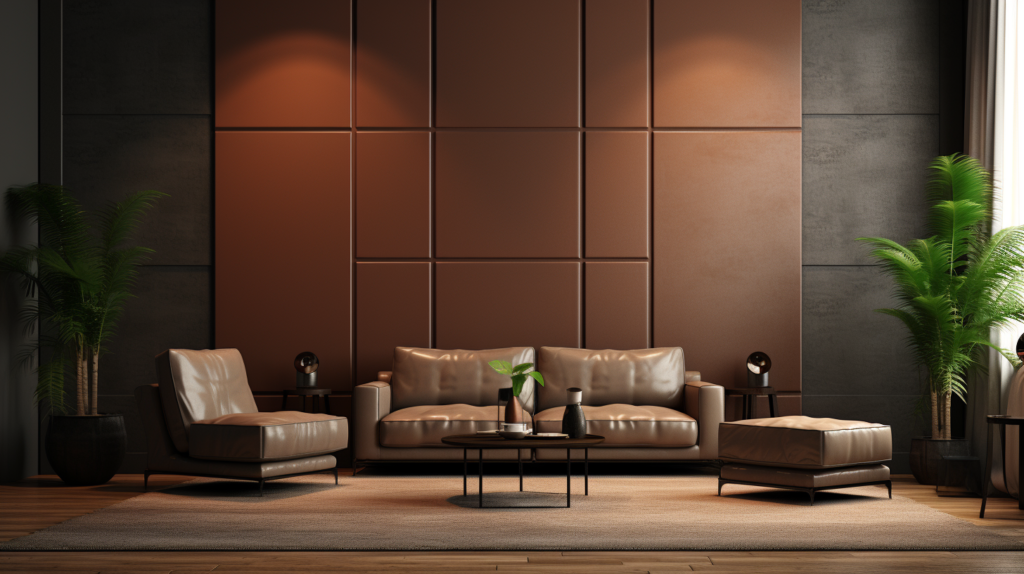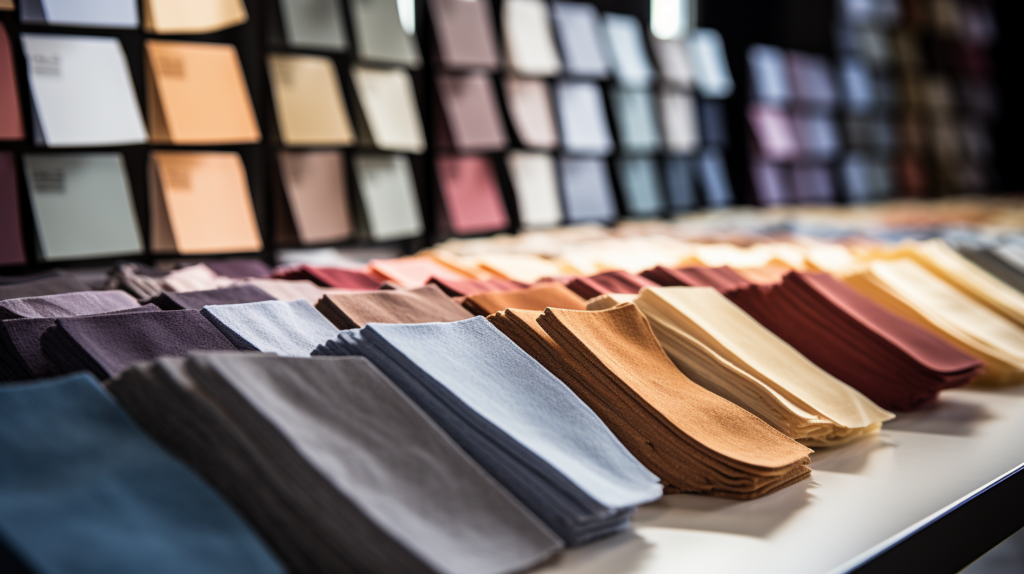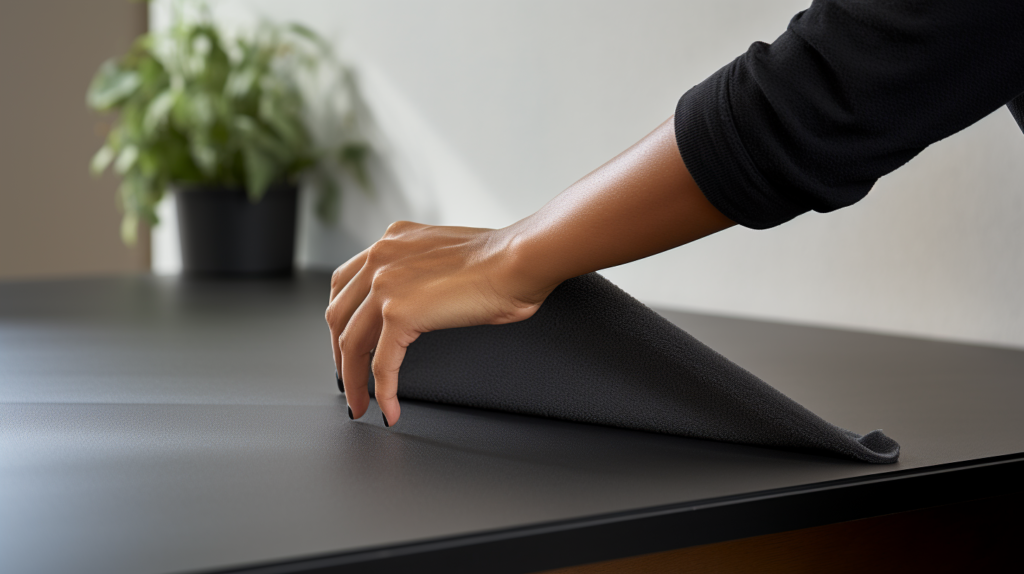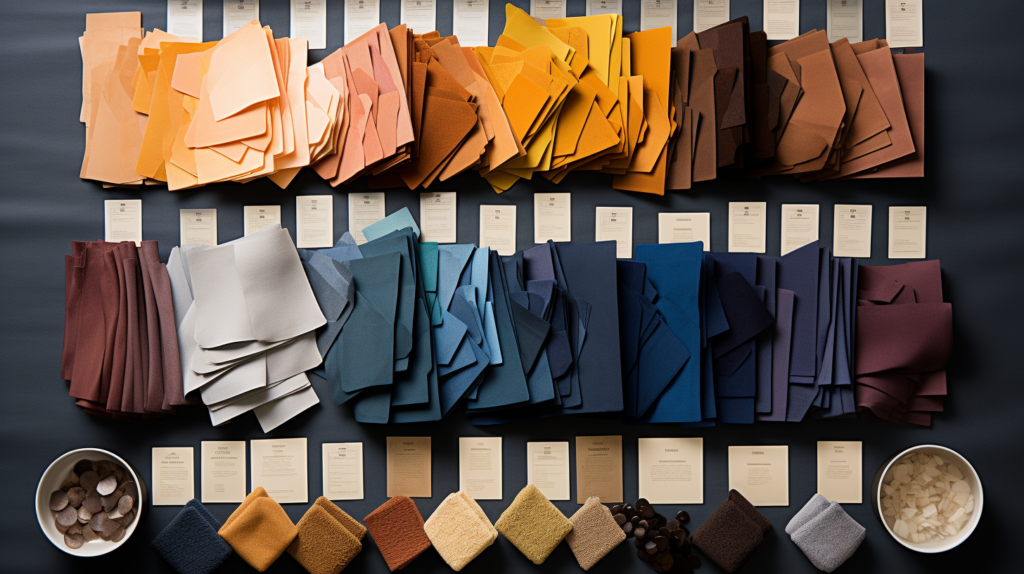Imagine walking into a room where every spoken word is crystal clear, and the ambiance is as aesthetically pleasing as a page from an interior design magazine. Sounds like a dream, right?
The secret to achieving this perfect blend of form and function may lie in your choice of fabric for acoustic panels.
While polyester acoustic panels have been the industry standard, a luxurious and practical alternative is quickly gaining ground: microsuede.
Ready to find out why microsuede could be your best choice?
Let’s dive in.
Why Choose Microsuede for Your Fabric-Wrapped Acoustic Panels?

What sets microsuede apart as a choice for fabric-wrapped acoustic panels? The first and most obvious reason is its aesthetic appeal.
Microsuede gives off a luxurious vibe that can instantly elevate the look of any room. Its velvety texture and rich colors make it a popular choice for high-end interior designs.
Beyond aesthetics, microsuede also offers practical benefits. The fabric is durable and less prone to wear and tear compared to natural materials like cotton.
Its resilience makes it a long-lasting option, ensuring that your investment stands the test of time.
Moreover, microsuede is relatively easy to clean, providing a blend of luxury and practicality that is hard to beat.
To know more about maintaining your acoustic treatments, check out our guide on how to clean your acoustic panels.
How Do You Select the Right Microsuede for Your Project?

Choosing a fabric for your acoustic panels is much like choosing a paint color for your walls; it requires thought and consideration.
So, how can you make sure you’re selecting the right microsuede for your project? The first factor to consider is the fabric’s thickness.
A thicker fabric may offer better sound absorption but could be more challenging to work with.
For insights into selecting the right thickness, see our article on how thick should acoustic panels be.
Another crucial aspect is color. Microsuede comes in a wide array of colors, allowing you to either match or contrast it with your existing decor.
However, it’s not just about picking a color that you like; consider how the color will interact with the room’s lighting and other design elements.
A shade that looks great under store lighting might not have the same appeal in the natural light conditions of your space.
How Can You Wrap Acoustic Panels with Microsuede at Home?

So you’ve chosen microsuede as your fabric and are now wondering how to go about the wrapping process?
Don’t worry; it’s a task that even a DIY enthusiast can undertake. The first step involves measuring the dimensions of your acoustic panels.
Precision is key here; you’ll need these measurements to cut your microsuede fabric to the right size.
Once you’ve cut the fabric, the next step is to attach it to the panel. This can be done using either staples or a strong adhesive.
If you’re using staples, make sure to pull the fabric taut to avoid any wrinkles or sagging. If you opt for adhesive, apply it evenly across the panel’s surface for a smooth finish.
It’s a straightforward process but one that requires attention to detail for professional-looking results.
For those interested in DIY projects, consider our DIY acoustic panel guide.
What’s Involved in the Cleaning and Maintenance of Microsuede Acoustic Panels?

One of the benefits of choosing microsuede is its ease of maintenance. But what does that entail? For routine cleaning, a simple dusting or vacuuming will suffice.
This will remove any surface dirt and keep your panels looking fresh.
For those accidental spills or stubborn stains, microsuede can be cleaned with a damp cloth and a mild detergent.
It’s essential to spot-test any cleaning solution on an inconspicuous area first. This ensures that the cleaner won’t alter the fabric’s color or texture.
Once you’ve confirmed it’s safe, you can proceed to clean the affected area.
How Does the Cost of Microsuede Compare to Other Fabrics?

Cost is often a deciding factor in any project, and choosing a fabric for acoustic panels is no exception. So, how does microsuede stack up against other options in terms of cost?
Microsuede is typically priced higher than common fabrics like cotton but is generally less expensive than specialized acoustic fabrics.
This positions microsuede as a middle-of-the-road option, offering a balance between cost and luxury.
However, it’s important to consider not just the upfront costs but also the long-term value.
Given its durability and ease of maintenance, microsuede can be a cost-effective choice over the long run.
Additionally, it’s worth comparing it to polyester acoustic panels, which can offer a more budget-friendly yet effective solution.
For a comprehensive understanding of costs, see our guide on how much acoustic panels cost.
Are There Real-World Examples of Microsuede Acoustic Panels?

If you’re wondering whether microsuede acoustic panels are just a fad or have practical applications, you’ll be pleased to know that they are used in various settings.
From upscale home theaters to corporate boardrooms, microsuede has proven its worth as a high-performing, aesthetically pleasing option.
These real-world applications serve as a testament to the material’s versatility and effectiveness.
For those looking to enhance their home theater experience, our guide on where to place acoustic panels in a home theater may offer further insights.
Conclusion
The world of fabric-wrapped acoustic panels is diverse, offering a range of options for different needs and aesthetics.
While polyester acoustic panels have long been a reliable choice, microsuede is emerging as a compelling alternative.
With its luxurious texture, wide range of colors, and impressive durability, it’s a material that combines form and function in a unique way.
Selecting the right fabric for your acoustic panels is a critical decision that requires careful consideration of various factors.
These include not just the material’s acoustic properties but also its aesthetic appeal, ease of maintenance, and cost.
By understanding the many benefits and considerations that come with using microsuede, you can make an informed choice that enhances both the sound quality and visual appeal of your space.
